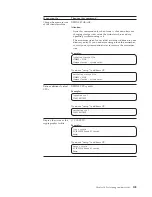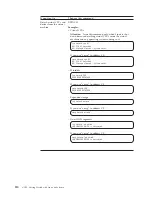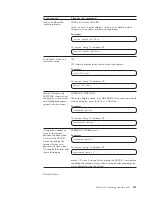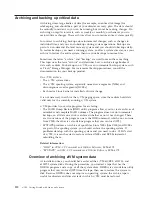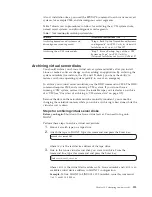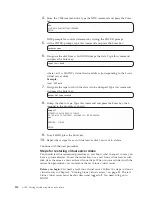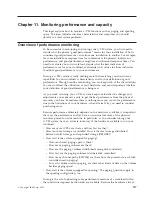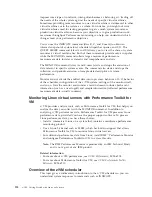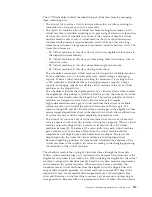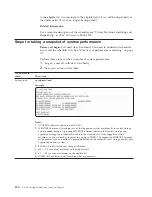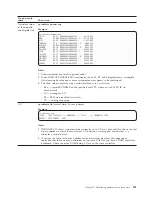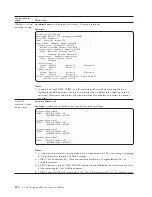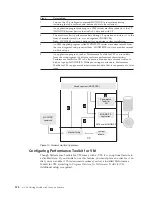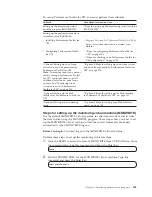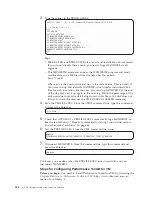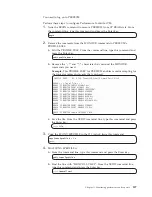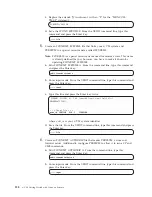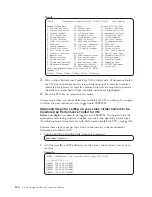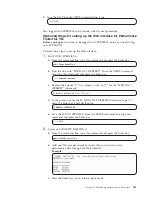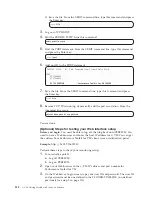
Chapter 11. Monitoring performance and capacity
This topic explains how to monitor z/VM functions such as paging and spooling
space. The topic includes run-time characteristics and symptoms you should
observe to avoid system problems.
Overview of performance monitoring
To be successful in monitoring and tuning your z/VM system, you first need to
decide what the phrase “good performance” means for your installation. What is
considered good performance varies from one installation to another. For example,
for some installations response time for commands is the primary indicator of
performance, and good performance might mean sub-second response times. You
need to evaluate your own workload, decide what the best indicators of
performance are for your workload, and decide what values for those indicators
constitute good performance in your environment.
Tuning a z/VM system is really nothing more than matching your hardware’s
capabilities to your workload’s characteristics and to your definition of good
performance. Through routine monitoring, you can keep track of the characteristics
of your workload, the utilization of your hardware, and, most important, whether
your definition of good performance is being met.
As you work at tuning your z/VM system, keep in mind that the changes and
adjustments you make serve only to get the best performance from the physical
resources you have. Sometimes there is nothing more you can do for performance,
due to the limitations of your hardware; when all else fails, you need to consider
purchasing more.
Because performance ultimately depends on the hardware available, it’s important
that you, the performance analyst, have an accurate inventory of the physical
resources present on your machine. In particular, as you consider tuning your
z/VM system, have an accurate inventory of the hardware available to run your
workload:
v
How many real CPUs are there, and how fast are they?
v
How much real storage is available? How is that real storage distributed
between central storage and expanded storage (XSTORE)?
v
How well is the system equipped for paging?
– How much total paging space is there?
– How many paging volumes are there?
– How are the paging volumes distributed among disk controllers?
– How fast are the paging volumes and their disk controllers?
– How many channel paths (CHPIDs) are there from the processor to each disk
controller used in paging?
– For each volume used for paging, are there other kinds of data on the volume
besides paging space?
v
How well is the system equipped for spooling? The paging questions apply to
the spooling configuration, too.
Tuning is the art of optimizing some performance measure of a workload within
the constraints imposed by the hardware available. Because the hardware always
© Copyright IBM Corp. 2009
117
Summary of Contents for ZVM - FOR LINUX V6 RELEASE 1
Page 1: ...z VM Getting Started with Linux on System z version 6 release 1 SC24 6194 00...
Page 2: ......
Page 3: ...z VM Getting Started with Linux on System z version 6 release 1 SC24 6194 00...
Page 10: ...viii z VM Getting Started with Linux on System z...
Page 12: ...x z VM Getting Started with Linux on System z...
Page 14: ...xii z VM Getting Started with Linux on System z...
Page 64: ...50 z VM Getting Started with Linux on System z...
Page 76: ...62 z VM Getting Started with Linux on System z...
Page 80: ...66 z VM Getting Started with Linux on System z...
Page 156: ...142 z VM Getting Started with Linux on System z...
Page 160: ...146 z VM Getting Started with Linux on System z...
Page 162: ...148 z VM Getting Started with Linux on System z...
Page 166: ...152 z VM Getting Started with Linux on System z...
Page 170: ...156 z VM Getting Started with Linux on System z...
Page 171: ......
Page 172: ...Program Number 5741 A07 Printed in USA SC24 6194 00...







